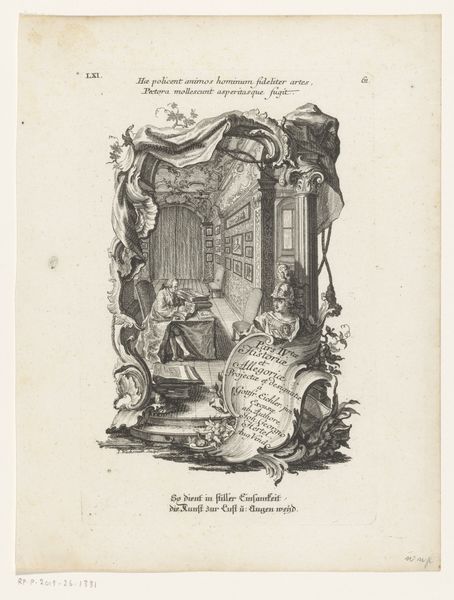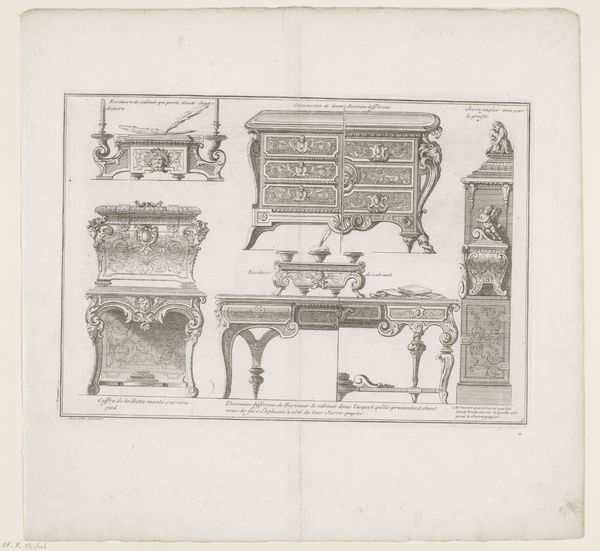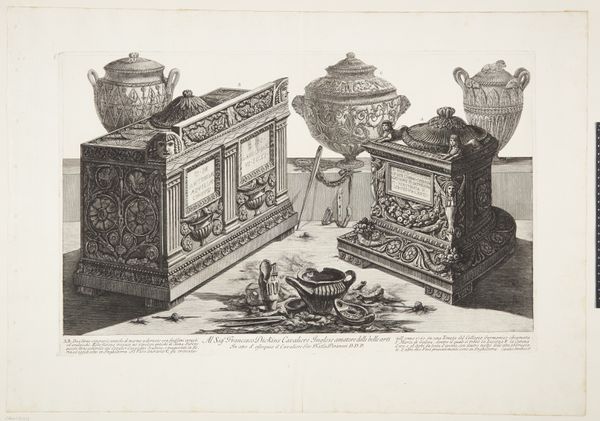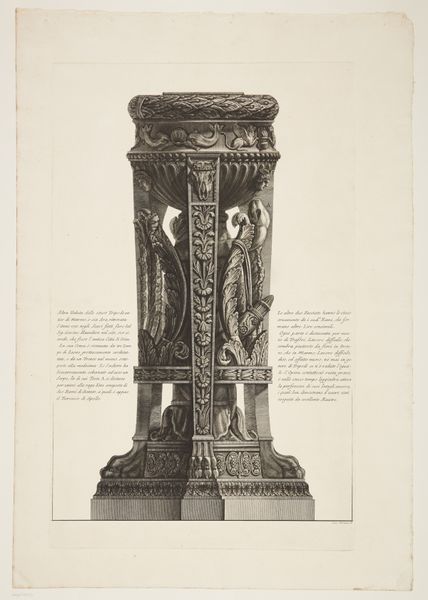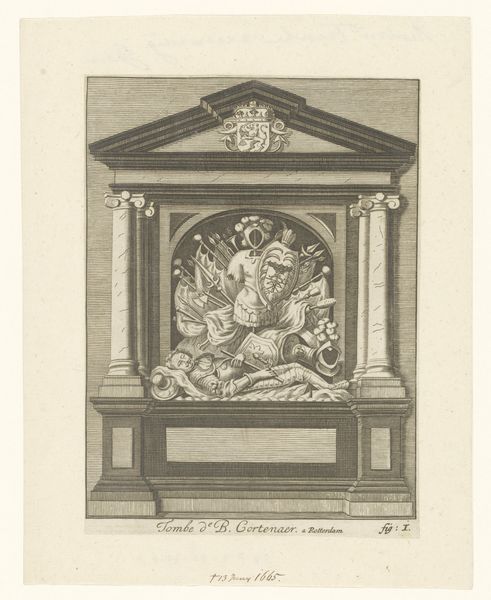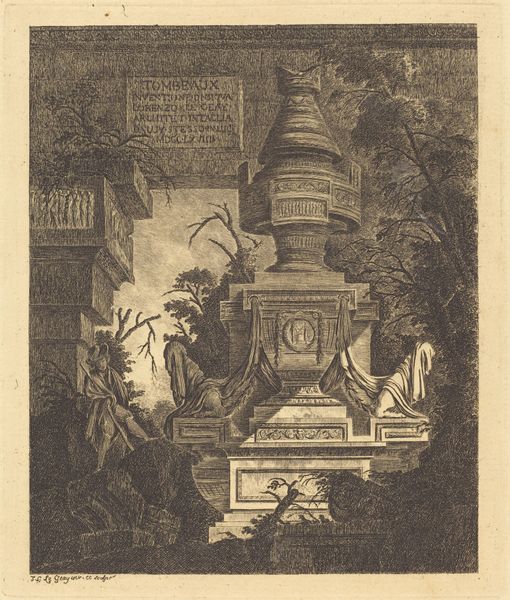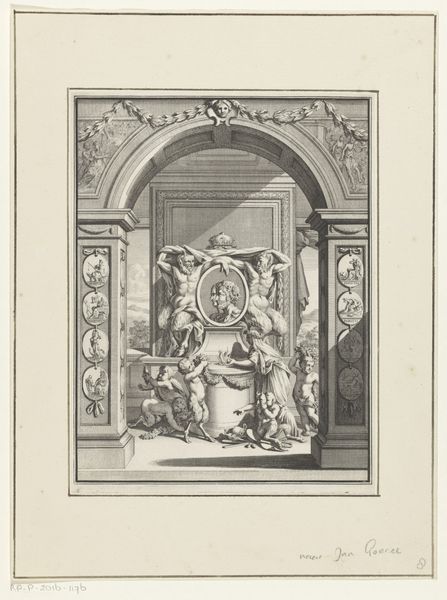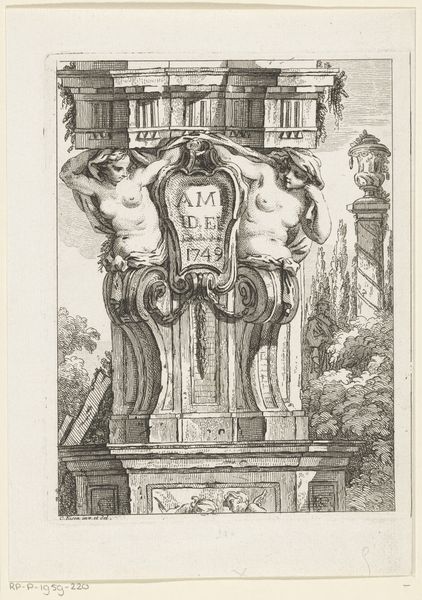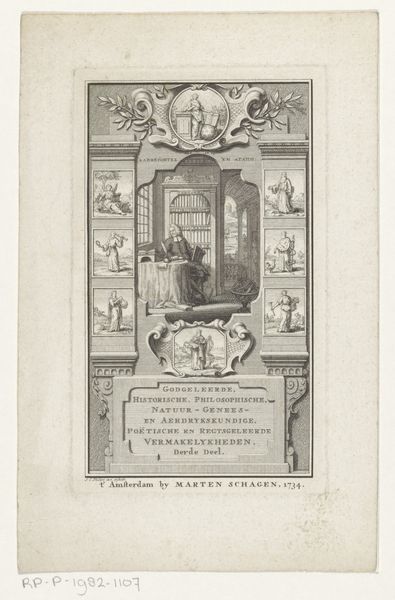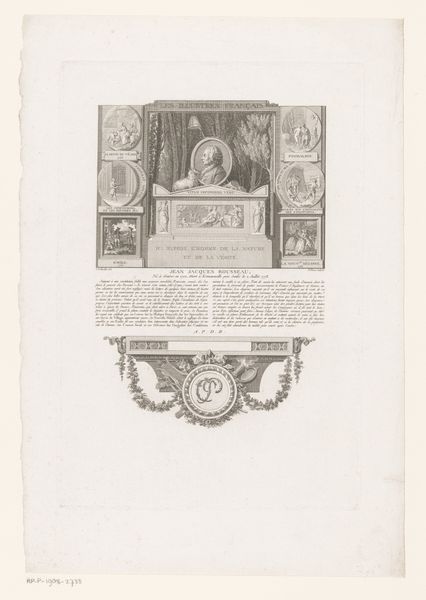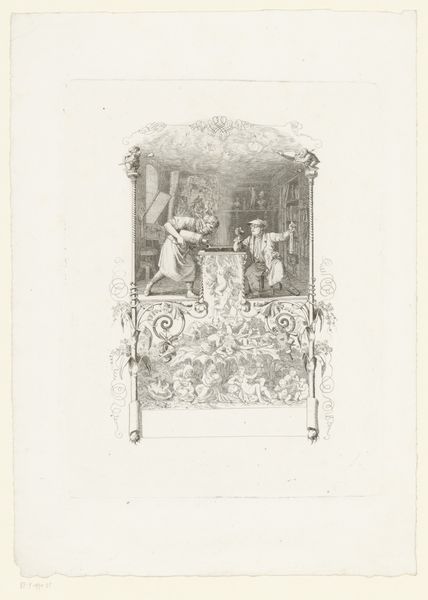
Funerary urn of Lucius Aurelius Terentius and of his wife Cecilia Tischerna 1769 - 1778
0:00
0:00
Dimensions: 535 mm (height) x 385 mm (width) (plademaal)
Giovanni Battista Piranesi created this engraving of a funerary urn for Lucius Aurelius Terentius and his wife Cecilia Tischerna. Here, death is not a void but a vessel brimming with symbols of life and transition. Notice the sphinxes at each corner of the base: these guardians of the afterlife, with their human heads and lion bodies, have roots stretching back to ancient Egypt, yet Piranesi reinterprets them through a neoclassical lens. These figures resonate across cultures, linking the Egyptian mysteries with Greek mythology, and Renaissance art. Further, there are garlands, owls, and deer skulls engraved on the stone. The garlands represent the cycle of life and rebirth, adorning even tombs to suggest continuity. The owl, a symbol of wisdom and nocturnal knowledge, is perched atop the garlands, perhaps watching over the departed souls. The deer skull, a poignant memento mori, is a reminder of mortality. This symbol also speaks to an ancient understanding of sacrifice and renewal. These motifs speak to the universal human experience of grief and remembrance. The symbols on this urn act as a bridge, allowing the past to converse with the present, echoing through our collective consciousness.
Comments
No comments
Be the first to comment and join the conversation on the ultimate creative platform.
